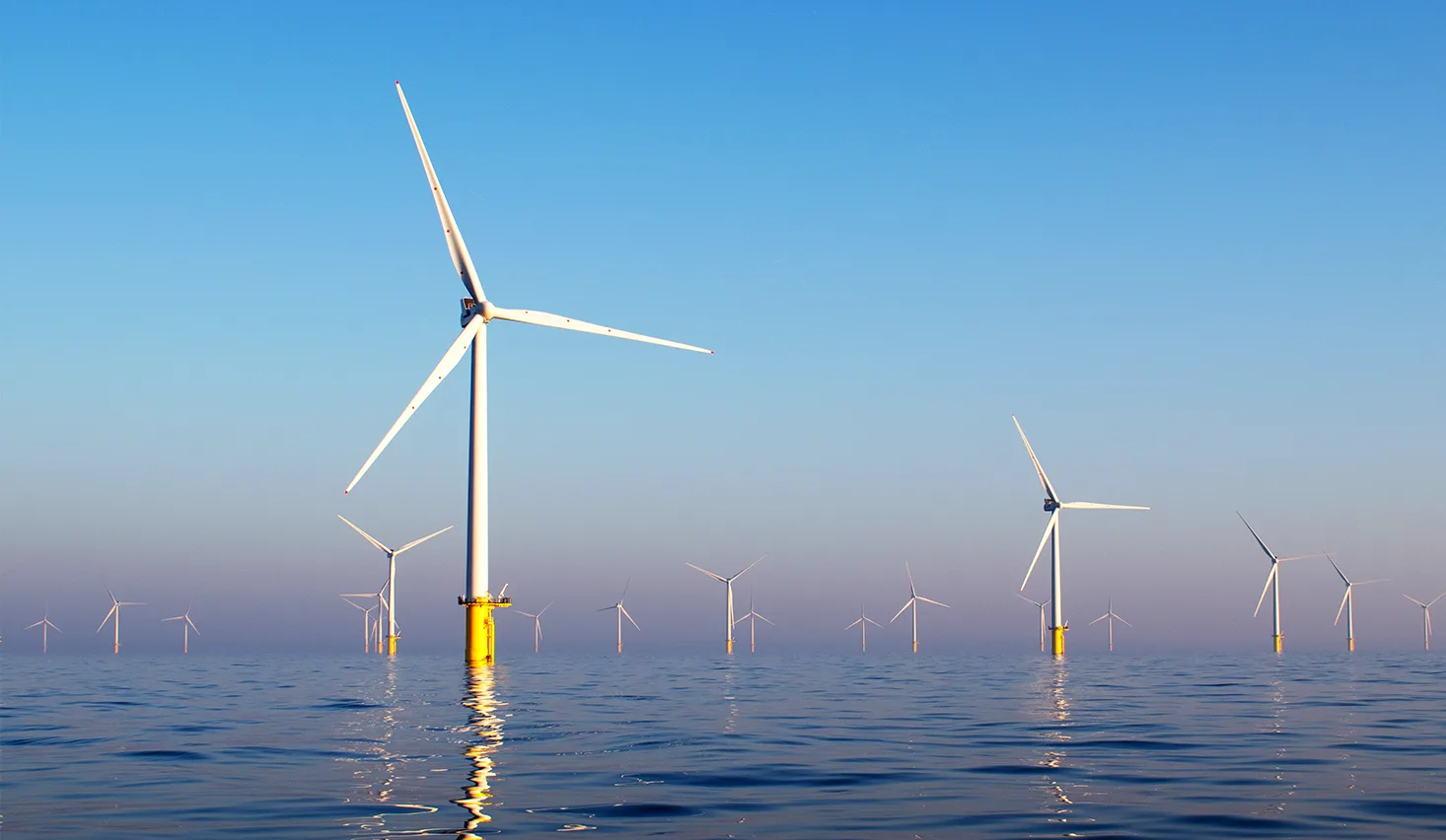
Winds of Change or Hot Air: Can Wales Become a Super Power in Floating Offshore Wind?
Wales is often described as a small nation, with big ideas. Many people automatically think of Aneurin Bevan and the National Health Service, but Welsh inventors have been credited for influential breakthroughs that have transformed industries – from radar to deep space photography, microphones to ‘packet-switching’ (a highly efficient computer communication technique and pre-cursor to the internet).
Fast-forward to 2023 and Wales is once again eyeing the opportunity to make a significant contribution to a new and growing industry – floating offshore wind power (or ‘FLOW’ as it has become known). Later this year, The Crown Estate will start auctioning sites for FLOW in the Celtic Sea, opening a new chapter for an industry projected to be worth around £82bn. The ambition is to generate 24 GigaWatts (GW) of wind energy from the Celtic Sea, a quarter of the UK target, by 2045 – with 1GW being enough to power 100 million LED light bulbs.
The world’s first floating offshore wind farm, Hywind Scotland, recently celebrated its fifth birthday. Its operator – Norwegian power company Equinor – will have about half the world’s total capacity of floating wind farms when its latest project off the coast of Norway comes online in 2023
Through its pilot project off the coast of Aberdeenshire, Equinor has learned a huge amount about the industry and the unique challenges associated with a floating wind farm. Performing routine maintenance and transferring crew in the face of high wind speeds and gigantic waves, while continuing to produce power, has enabled the operator to develop the technology and skills to lead the world in this field.
But Wales now has an opportunity to enter this rapidly-growing market at an early stage, building on Equinor’s experience and utilising our potential competitive advantages. Two key factors in our favour are location and expertise. The Crown Estate sites in the Celtic Sea can be easily accessed by two of Wales’ leading deep-water ports, Port Talbot and Milford Haven, with the capability and capacity to deliver sophisticated manufacturing and maintenance operations. In Tata Steel and Puma Energy, we have world-class steel-making and energy storage businesses, supported by a ready-made supply chain and a highly skilled workforce, not to mention a collection of well-regarded universities, which already deliver world-class research, innovation and education in areas like decarbonisation, sustainable buildings and transport, energy generation and storage.
So far, so good. But to deliver early-mover advantage, it’s not enough to just do what you’re already doing; you need to push the limit of ambition, invest in the future and think differently about what’s possible. Wales will need to up its game in terms of investment in infrastructure, advanced manufacturing, innovation, jobs, education and future skills. Government, business and academia will need to work closely together to enable home-grown businesses to compete in global markets to supply this new industry, as well as reversing the ‘brain drain’ that currently sees scores of talented people leaving Wales to seek better paid jobs.
We are already seeing some exciting collaborations, like proposals for a Celtic Freeport – one of three freeport bids currently being considered by Welsh and UK Ministers. The operators of Port Talbot and Haven estuary ports, alongside Neath Port Talbot and Pembrokeshire Councils, have drawn up plans to create a “green investment corridor”, estimated to create around 16,000 green jobs, generate £5.5m of new investment and accelerate the rollout of FLOW, as well as supporting the development of other low-carbon technologies and industries, including hydrogen networks.
The Celtic Freeport has received serious backing from industry, politicians and academics, who see it as a ‘once in a generation’ opportunity to capitalise on a rapidly growing industry, right on our doorstep. The prize for success is huge. Economics aside, experts argue that FLOW is an essential factor in meeting our Net Zero targets. The industrial clusters of Port Talbot and the Haven estuary are among the most polluting in Europe and decarbonising these operations has been high on the agenda for some time.
To meet the UK’s 24GW ambition by 2045, the industry will need to construct a base the size of a football pitch, topped with a 300ft high wind turbine and float it out into the Celtic Sea every week of the year. Success will require upgraded port infrastructure, a trained and mobilised workforce, strengthened local supply chains and streamlined planning and licensing processes. Get it right and developing expertise in FLOW could create massive opportunities for Welsh businesses, at home and abroad. Miss the mark and we could find ourselves watching from the side-lines.
This article was written by our chief executive, Angharad Neagle, and featured in the Western Mail on 6 February 2023
